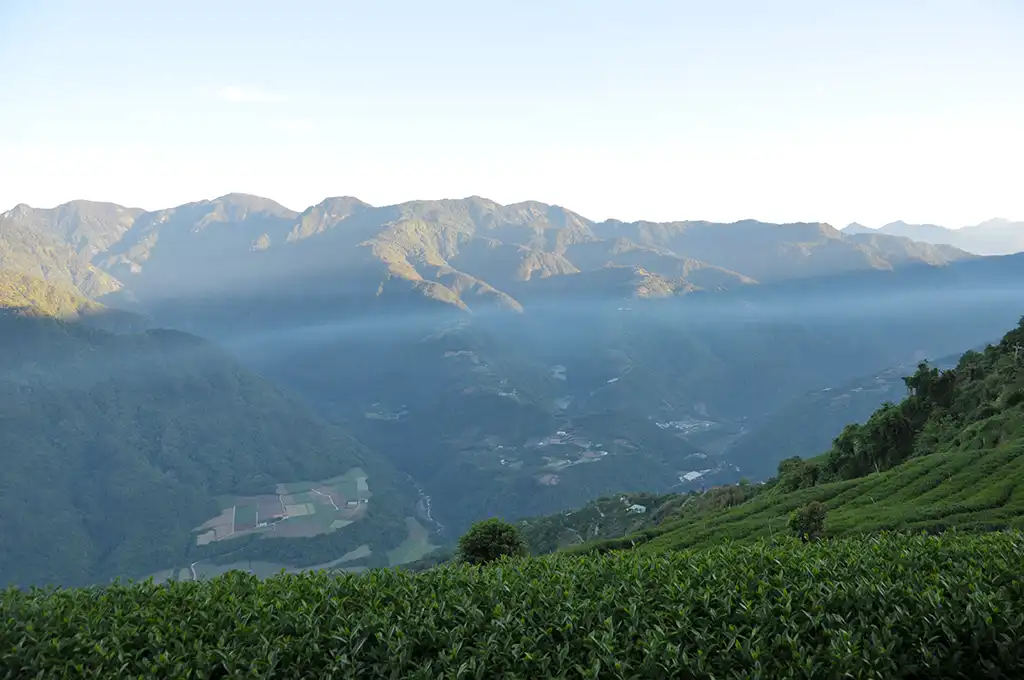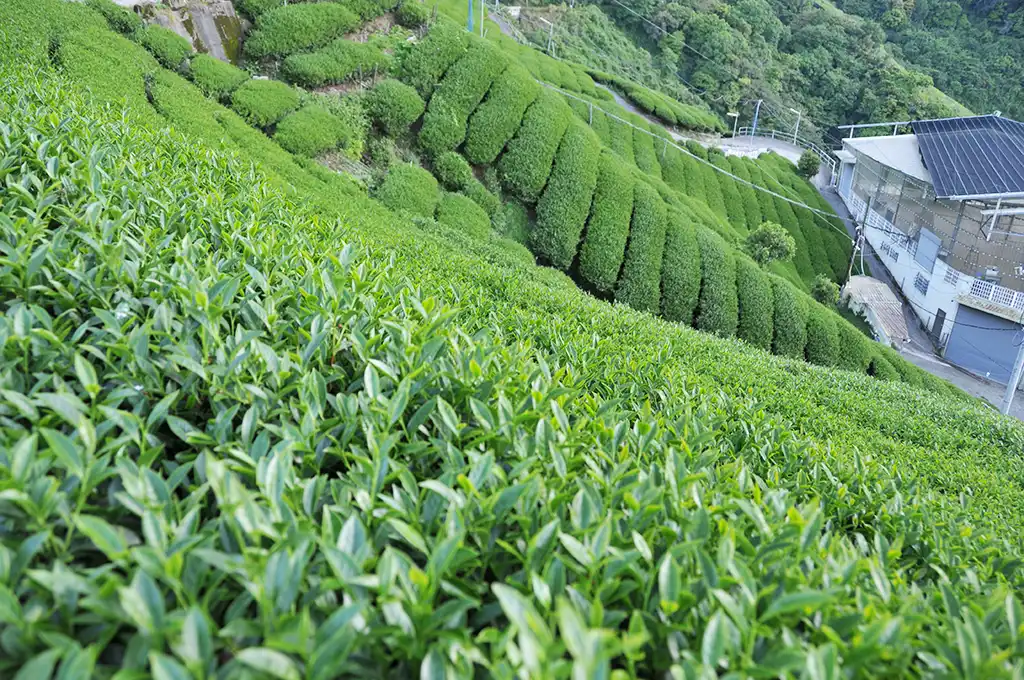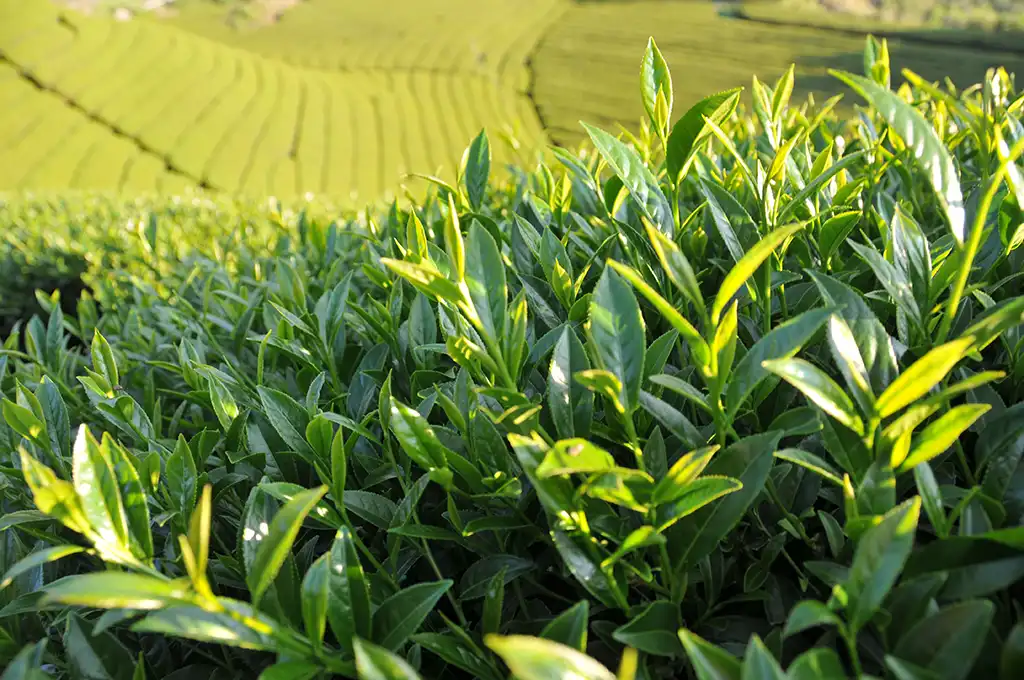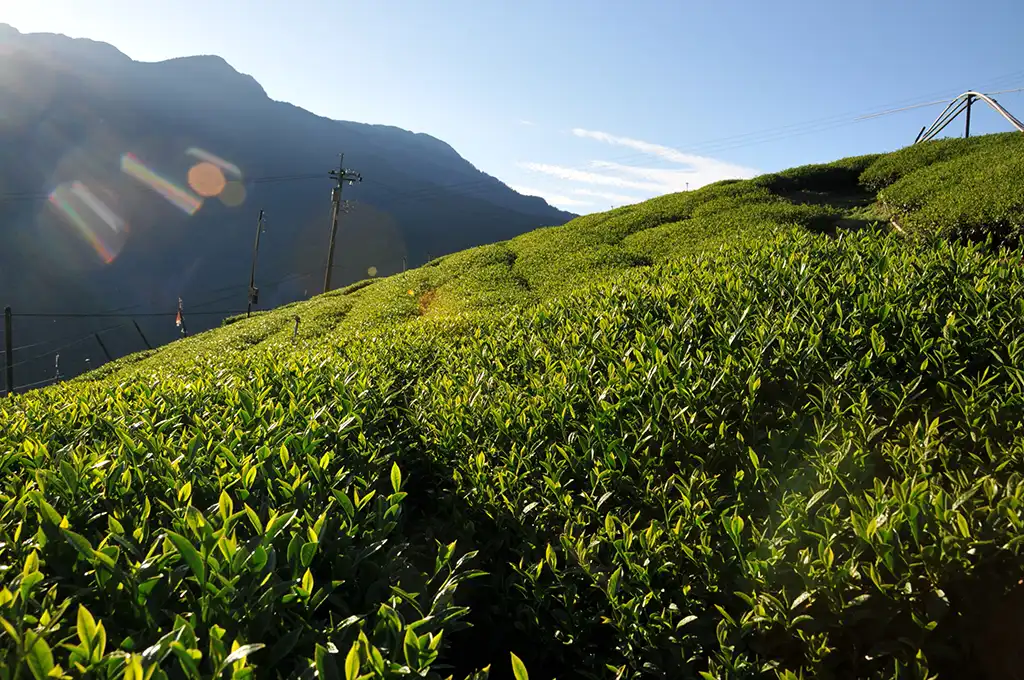Taiwan High Mountain Oolong Tea, often referred to simply as “High Mountain Tea,” refers to oolong tea cultivated in tea gardens at altitudes above 1,000 meters. This term is used to distinguish it from “lowland tea” and does not refer to a specific tea-growing region.
Due to the high-altitude environment, High Mountain Oolong Tea exhibits a natural sweetness with minimal bitterness. Additionally, Taiwan’s unique maritime monsoon climate contributes to the tea’s distinctive aroma, which often carries notes of vanilla and fruit.

Origins of Taiwan High Mountain Oolong Tea
In 1980, a farmer planted tea trees as an experiment at an altitude of 2,500 meters. To his surprise, the tea plants not only survived but also produced lightly oxidized oolong tea with a unique fragrance. Unsure of what to name this new tea, he called it “High Mountain Tea.” Over time, this name gained widespread acceptance and is now used to refer to all teas cultivated in mountainous regions at elevations of 1,000 meters or higher.

Characteristics and Advantages of Taiwan High Mountain Oolong Tea
Taiwan High Mountain Oolong Tea is prized for its low bitterness, high sweetness, and distinctive aroma. These qualities are primarily attributed to the unique geographical and environmental conditions of Taiwan’s high-altitude tea-growing regions. Here are some key characteristics and advantages:
| Subtropical Monsoon High Mountain Environment | Taiwan’s island geography, subtropical climate, and maritime monsoon conditions play a crucial role in shaping the tea’s aroma. No other region at the same latitude possesses an identical climate. |
| Long Growth Cycle Reducing Bitterness | In high-altitude areas, afternoon clouds frequently obscure sunlight, limiting tea plants to partial or diffused sunlight. As a result, the tea trees grow more slowly, leading to lower concentrations of bitter compounds such as catechins, theobromine, and caffeine. |
| Large Temperature Differences Enhancing Sweetness | The significant temperature variation between day and night in high-altitude regions creates a cold nighttime environment. To withstand the cold, tea plants develop thicker leaves with higher pectin content. This results in a softer, more succulent tea leaf that produces a naturally sweeter tea liquor. |


Due to its superior quality, High Mountain Oolong Tea became increasingly popular after 1990, gradually replacing lowland tea in the Taiwanese market. Among Taiwan’s various oolong teas, High Mountain Oolong has emerged as the most sought-after variety.